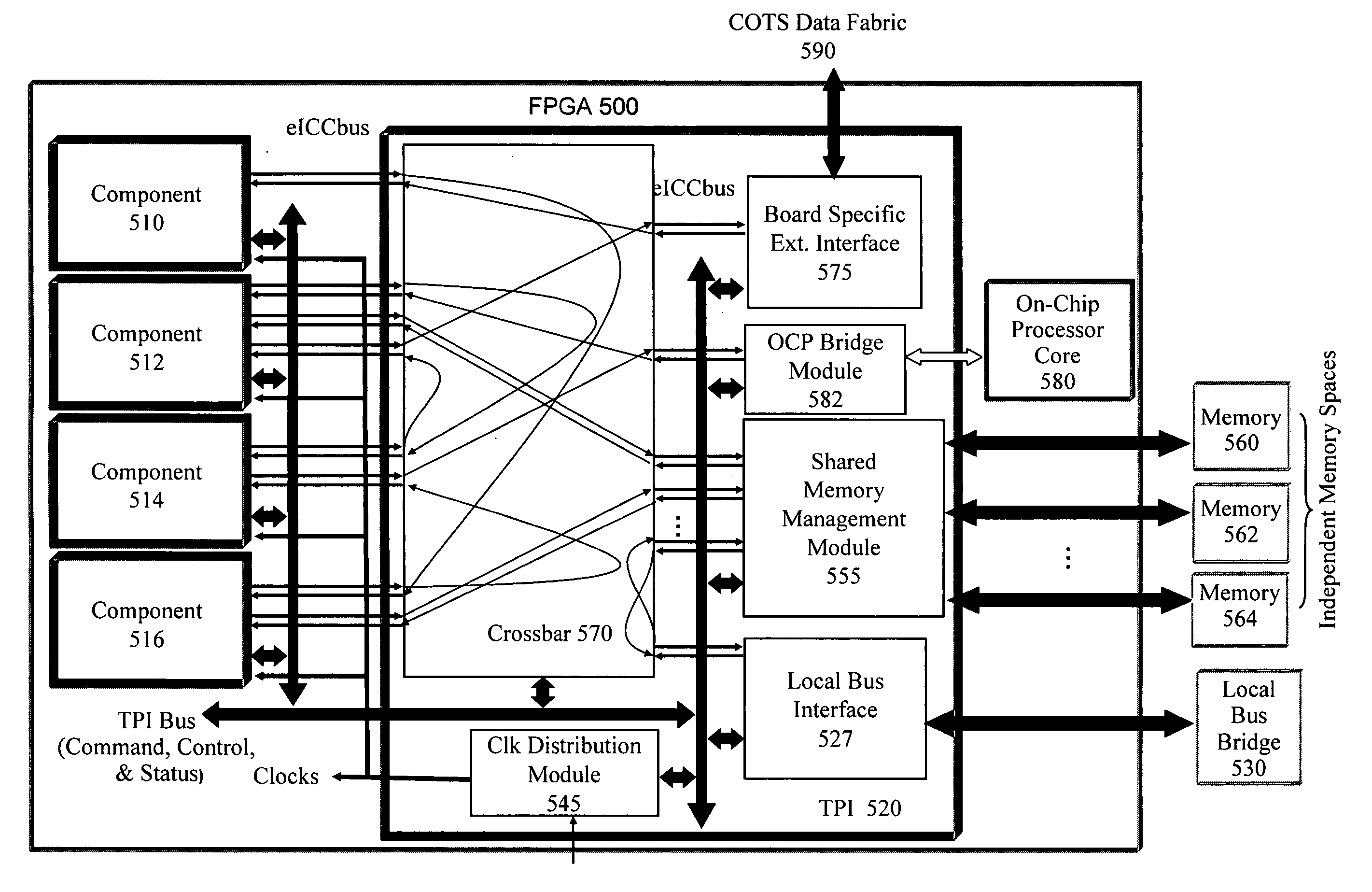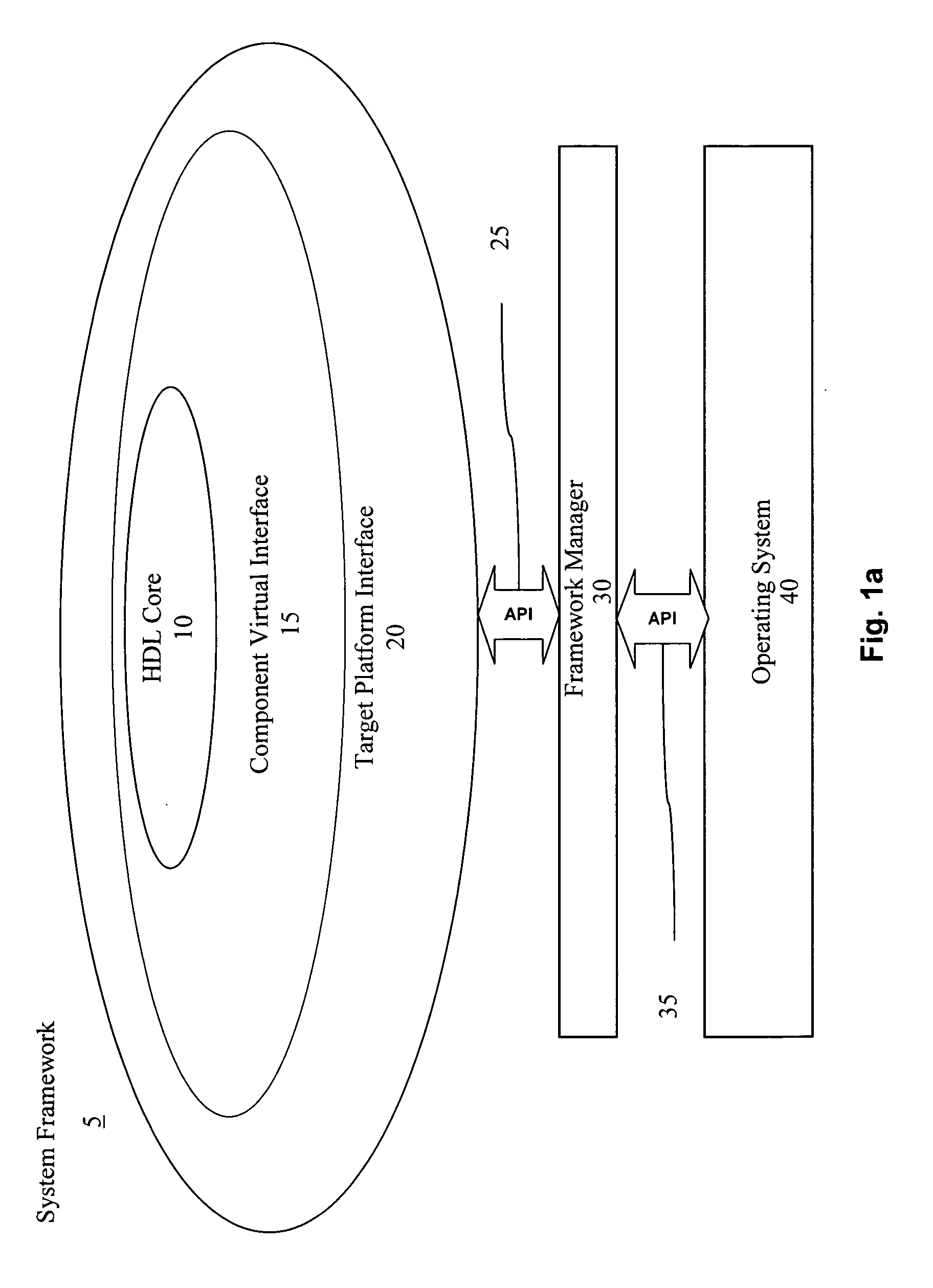Common interface framework for developing field programmable device based applications independent of a target circuit board
a common interface and target circuit board technology, applied in the field of multi-level frameworks, can solve the problems of reducing the marketability of programmable device based applications, and achieving their full potential, so as to reduce the cost and time to market
- Summary
- Abstract
- Description
- Claims
- Application Information
AI Technical Summary
Benefits of technology
Problems solved by technology
Method used
Image
Examples
Embodiment Construction
[0048] One embodiment of the present invention is a mechanism for making a component independent of the hardware. Thus, one implementation of the present invention is to develop a framework where the application is developed independent of the chip or board, and any dependency is built in as part of the framework. The description herein describes one form of Field Programmable Devices (FPDs), namely Field Programmable Gate Arrays (FPGAs) in order to describe one embodiment of the invention. However, the description is equally applicable to other FPDs such as Simple Programmable Logic Devices (SPLDs), and Complex Programmable Logic Devices (CPLDs). Likewise, the use of VHDL as a core application is merely used for illustrative purposes as an example of a hardware design language (HDL) and other design languages are within the scope of the invention.
[0049] Referring to FIG. 1a, a top overview is presented, wherein the invention is a system framework 5 where the HDL core 10 is develop...
PUM
 Login to View More
Login to View More Abstract
Description
Claims
Application Information
 Login to View More
Login to View More - R&D
- Intellectual Property
- Life Sciences
- Materials
- Tech Scout
- Unparalleled Data Quality
- Higher Quality Content
- 60% Fewer Hallucinations
Browse by: Latest US Patents, China's latest patents, Technical Efficacy Thesaurus, Application Domain, Technology Topic, Popular Technical Reports.
© 2025 PatSnap. All rights reserved.Legal|Privacy policy|Modern Slavery Act Transparency Statement|Sitemap|About US| Contact US: help@patsnap.com



